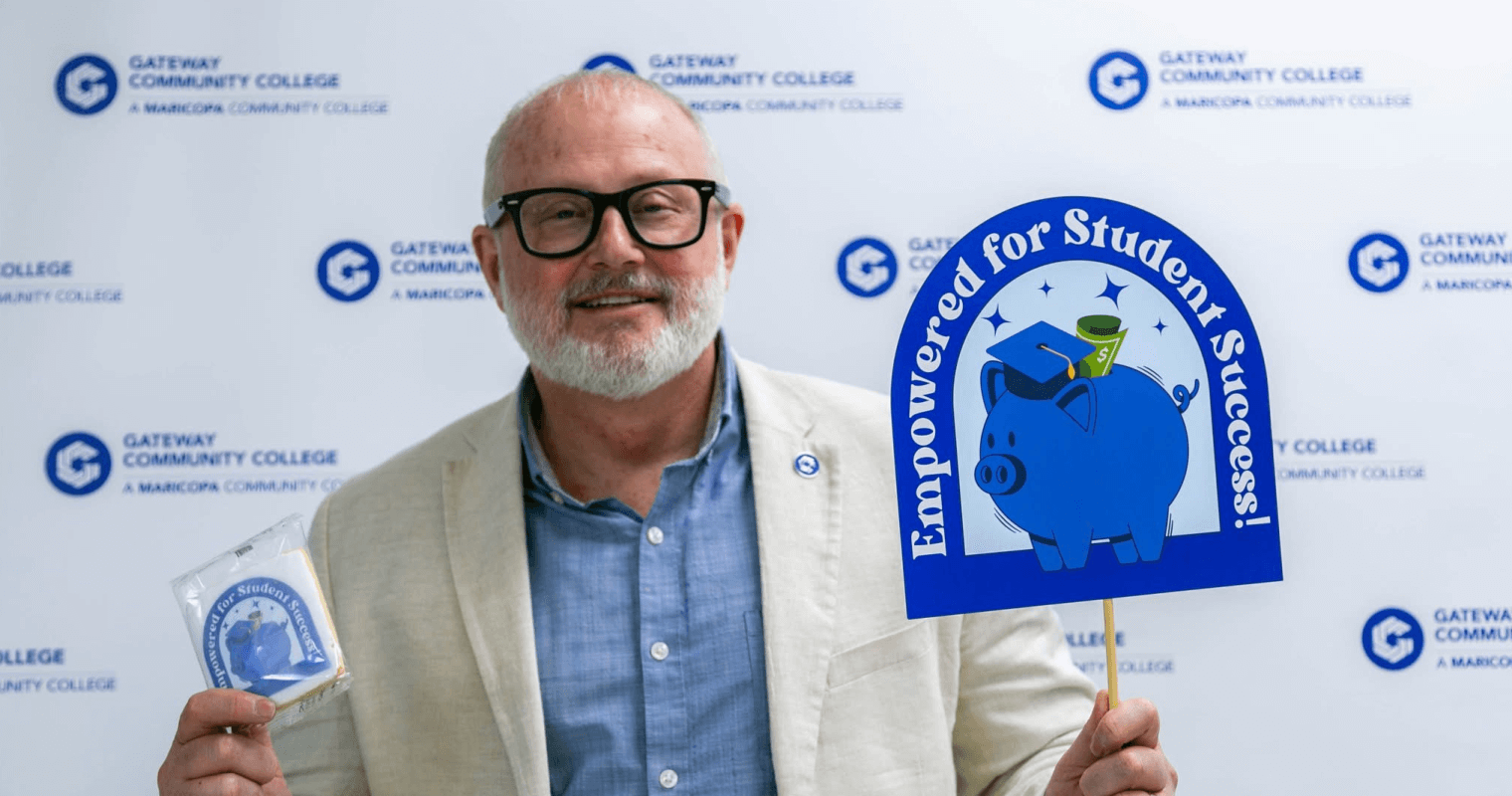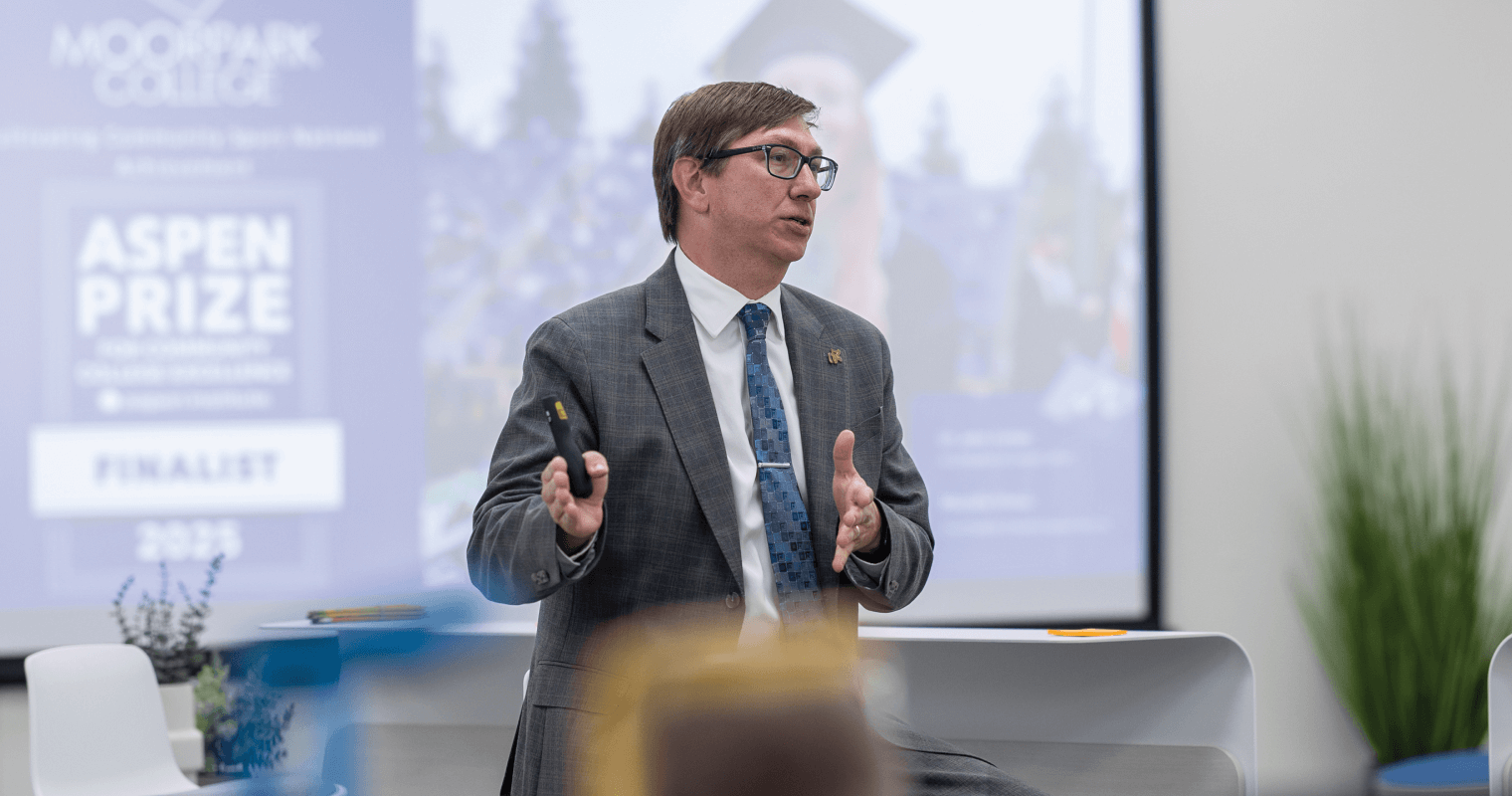Located in the metropolis of Phoenix, Arizona, GateWay Community College is at the center of both growing industries and a growing population. Massive manufacturing and semiconductor facilities are coming to the state and require professionals in a wide range of critical areas. To explore how one institution navigates this dynamic landscape, we spoke with Dr. Tom Nevill, Vice President of Academic Affairs at GateWay Community College, part of the Maricopa Community Colleges System.
Staying Flexible to Meet the Semiconductor Surge
GateWay Community College’s new semiconductor workforce accelerator program is a prime example of how the college is adapting to meet workforce demand. GateWay is one of several colleges across the state that are a part of Arizona’s semiconductor initiative, the Future48 Workforce Accelerator. While the Maricopa System already has an established curriculum for the semiconductor program, GateWay is focused more specifically on the space and training aspects. This includes renovating one of GateWay’s campuses for a semiconductor incubator training space.
The goal is to create a facility “embedded into the industry of semico and really focusing on some of those core components that these entry-level positions into that industry would look at,” such as basic circuit training and mechatronics. However, flexibility is key. Dr. Nevill explains: “We’re building a mock clean room... we can change things in and out as the technology evolves.” This adaptable learning environment allows for tailored training, whether a company needs a two-week program, credit, noncredit, clock hour, or credit for prior learning. Essentially GateWay is prepping for “whatever is needed for us to meet the needs of our community.”
Leveraging Partnerships to Propel the Digital Transformation of Higher Ed
Dr. Nevill sees colleges steadily growing in the digital space and in many ways “becoming more and more tech companies every day.” For example, he points to the vast amount of digital content created by students and faculty through learning management systems and other avenues. However, despite this rapid adoption of technology, Dr. Nevill notes that compared to tech companies, “we don’t always operate like one.” The challenge lies in aligning internal operations with external technological advancements.
“We’re teaching all this innovative stuff, but we don’t operate with it sometimes,” largely because budgets often prioritize student-facing initiatives over digitizing back-end processes, Dr. Nevill explains. Yet, as technology becomes more affordable, Dr. Nevill sees this as a significant “area of opportunity for us in higher ed.”
To help make technological strides, leveraging external expertise can be a gamechanger. Dr. Nevill, a professionally trained musician, acknowledges that he didn’t frequently interact with computers as part of his professional education. However, daily interaction with technology is now the norm. To help bridge gaps in expertise that may exist in academia, he sees opportunities to leverage the expertise of vendor partners.
Dr. Nevill explained that “we are all in this together and we all focus on our certain components of how we make it happen.” This collaborative approach is vital for integrating new technologies like AI, which is “impacting the future of the workforce.” He believes that if software companies are driving these innovations, then colleges “need to be partners with them so we can ensure our students are successful—to be prepared for careers where that’s necessary.”
Bridging the Apprenticeship Gap
Just as outside partners can bring value to colleges and universities, institutions bring their own set of expertise to working with employers. For example, registered apprenticeships are a crucial avenue for workforce development, but their implementation can be complex, especially for employers trying to set up new ones. However, colleges are uniquely positioned to serve as an “intermediary perspective” between the employers and the student. To help bridge this gap, colleges are well situated to help “employers understand what we can do to help them provide some of that educational opportunity through apprenticeship models.”
To assist employers, GateWay offers a program called the Cooperative Apprenticeships Model where they help employers work through the regulations and administrative tasks required by the Department of Labor to sponsor a registered apprenticeship. The other goal is to make apprenticeships more accessible and integrated into the broader higher education system. Dr. Nevill explains that traditionally colleges give credit for prior learning that comes with a journeyman’s card and then students may take a few more classes to earn an associate’s degree. However, in an ideal world these experiences and credits would be stackable into a bachelor’s degree “so you can continue on your education path if you choose to—without much burden on the student. They can just seamlessly go through that.”
Orchestrating a Seamless Student Experience in the Face of Program Complexity
Aside from apprenticeship programming, GateWay offers an array of different programs, including clock hour programming, noncredit programming, credit programming, and newly offered bachelor’s degrees. Managing such a diverse portfolio of programs, some with multiple modalities, is not without its challenges. Dr. Nevill emphasizes that the key to success lies in the back-end management to ensure a seamless student experience. “We don’t want a student that feels as though they can’t find which way they should go—from a public-facing view or from onboarding or their interest in the college,” he states.
He likens this intricate process to a “tap dance” or “juggling chainsaws that are on fire.” However, it is critical to always keep students at the center of program communication. This means constantly “figuring out the best way to solve that gap behind the scenes or improve that communication or create a workflow or use some sort of technology to improve that process.” The goal is for all internal offices to collaborate effectively, making student pathways clear and easily accessible.
Focus on What You Can Control: Cultivating Continuous Curriculum Innovation
As a college deeply embedded in the community, maintaining a culture of innovation is essential to ensure curriculum remains relevant to workforce needs. GateWay Community College exemplifies this with its clock hour programs. Many of these programs are in the healthcare field and include emergency medical technology, medical assisting, pharmacy technician, and phlebotomy. Dr. Nevill explained that these programs undergo “curriculum changes monthly, it seems like, because they’re really innovative in terms of staying connected with industry.” This rapid adaptation is possible because these programs are owned and driven internally at GateWay, compared to some of the programs shared across the Maricopa System.
While updating credit hour programs shared across the college system can be more intricate, this makes it all the more important to focus on innovating the programs unique to GateWay that can be adjusted more quickly. For Dr. Nevill, it comes down to offering a curriculum that drives impact. One guiding question he asks is, “What can we do that’s going to be different and drive impact?”
Looking Forward and Remaining Grounded Amid the Noise
As a college constantly looking to the future, Dr. Nevill stresses the importance of foresight beyond immediate concerns. “As you think about the future, it not only involves your own perspective or what’s revolving in your world, but what’s impacting that a little bit further out.” He acknowledges that current processes will evolve over the next five years, requiring institutions to be agile. “If we can build those mechanisms, infrastructures, or that way of thinking with our teams that say, ‘Hey, if we have to zig left and we have to zag right, are we ready for that?’”
On the other end of the spectrum, it can be difficult to stay rooted in the day-to-day operations of an institution. To remain focused, GateWay’s executive team begins weekly meetings by sharing a “mission moment,” a personal story of how they’ve positively impacted a student. Dr. Nevill shares that even when you may not have a story of your own, “other people’s inspiration reminds you why we’re there” and helps keep the mission at the forefront.
Personally, music plays a big role helping Dr. Nevill stay grounded. A trained percussionist who plays in an employee band at GateWay, he finds that music helps him stay grounded and connected to the work. For example, in some ways the academic calendar mirrors the “cadences and the repetitive nature of music.” Playing in the band also helps build connections and is a “great way to be introduced to the campus community and become engaged with my colleagues.”
Dr. Nevill offers us a compelling example of how even amidst the chaos, institutions can lead with innovation and a student-first mindset. GateWay’s proactive engagement with industry and commitment to leveraging strategic partnerships demonstrate a forward-thinking approach that prioritizes responsiveness to student and industry needs with the ultimate goal of creating impact.



.svg)



